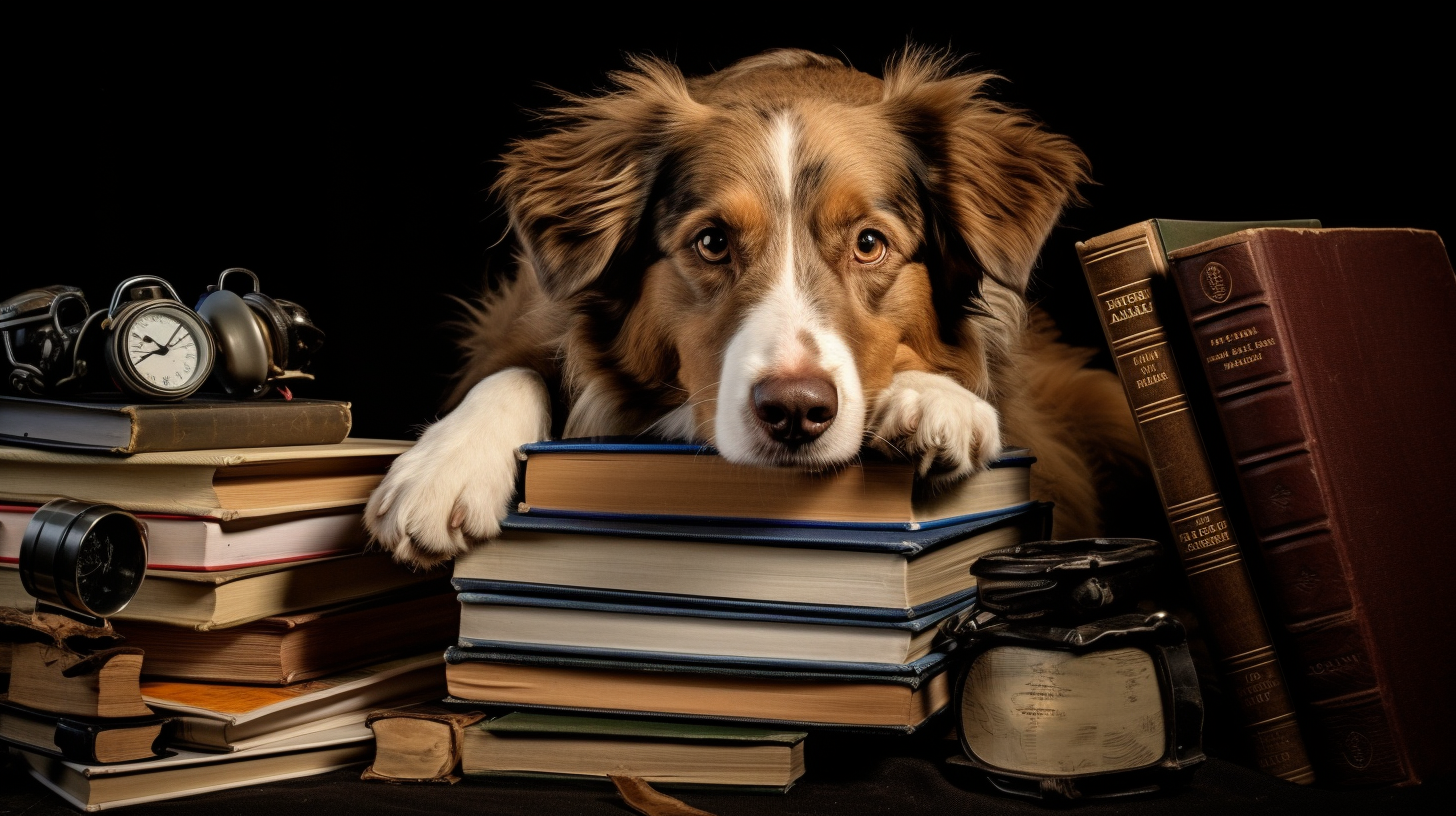It’s no secret that the Canine Republic has been a hub of innovative ideas and cultural evolution, but a new trend among our esteemed four-legged community has literary critics wagging their tails in excitement. Dogs are not only penning their memoirs but also delving into the realms of fiction, poetry, and drama, unleashing a new wave of canine literary talent upon our society.
Indeed, the recent ‘Barktober Book Festival’ saw a surge in paw-authored manuscripts, with titles ranging from the suspenseful ‘The Hound of Musicwell Bark’ to the uplifting ‘A Tail of Two Doggies.’ The event was a howlsing success that drew pups and elder dogs alike, all eager to sniff out the latest literary works.
Boldly going where no dog has gone before, a talented terrier named Sir Barkalot has set the standard with his bestselling novel, ‘The Great Bone Mystery.’ His ability to construct intricate plots and emotionally gripping narratives has led some to call him the Canidae Dickens of our generation. His flair for storytelling not only captivates but also speaks volumes about the intricate and emotional inner lives of our canine compatriots.
Interviews with these budding authors indicate that the trend is not just about fame or fetching more treats; it’s a cultural movement driven by the desire to share unique canine perspectives with the wider world. Sandy Puppins, author of the philosophical ‘Bark and Existence,’ notes, “It’s about exploring the woof and warp of our society through a narrative lens.” These words suggest that this literary flowering is as much about self-expression as it is about crafting compelling narratives.
The literary trend also showcases the diversity within the Canine Republic. From the aristocratic Afghan hounds penning elegant sonnets to the street-smart rescue dogs bringing their gritty urban dramas to the page, the Canine Republic’s literary world is as varied as the breeds that compose it.
What’s more, this phe-nom-a-nomenon has reached beyond the private sphere of dog-only writing circles and into interspecies collaboration. Felines, birds, and even humans are taking note, providing editorial guidance, while maintaining the authenticity of the dog-authored work. This collaboration not only fosters harmony among species but also creates a richer tapestry of voices in the republic’s literary scene.
However, not everyone is on board with the movement. Some critics argue that this is merely a passing fad, citing the age-old adage, “You can’t teach an old dog new tricks.” They claim that while it may be endearing to see dogs take up the quill, the place for pets in literature is firmly in the subject, not the author category. Despite these objections, the sales numbers and critical acclaim speak for themselves – dog literature is not only here, it’s thriving.
In essence, this burgeoning field asks us to consider whether the essence of a great storyteller lies not in opposable thumbs or human thought, but in the ability to experience, empathize, and express. Are dogs the next great novelists? The current evidence points to a resounding yes, as they dig up fresh narratives and bury stale stereotypes with each turn of the page.
As we look to the future, it’s clear that the canine voice is only growing stronger in the literary world. With new dog-authored titles being published every month, one can only wonder what stories await us. So let us raise a paw in salute to these pioneering pooches who are redefining what it means to be a novelist in the Canine Republic.
